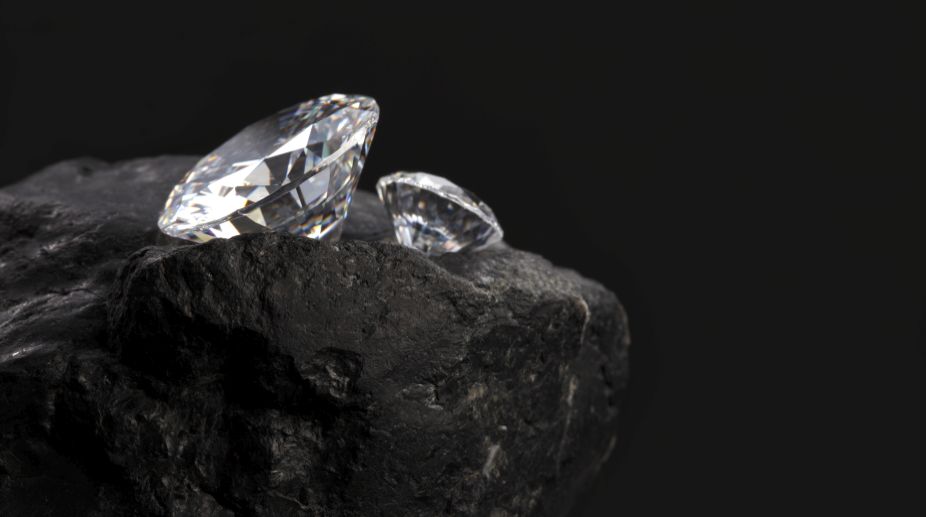The Northeastern border state of Nagaland, recently projected by a geologist as a promising place to prospect for gold, may be springing another glittering surprise.
The "ophiolite" rocks of the state, that is a part of the Indo-Myanmar ranges, may potentially hold "microdiamonds" – diamonds of small size, less than one millimetre – according to an Indo-German study published in a recent issue of the journal Current Science.
Advertisement
The authors – Bibhuranjan Nayak of the CSIR-Institute of Minerals and Materials Technology in Bhubaneswar, and Franz Michael Meyer of Aachen University in Germany – say that indications for occurrence of "microdiamonds" has come from their discovery of the presence of a manganese-bearing mineral called "manganilmenite" in the ophiolite rocks they studied in the Pokphur area of Nagaland.
"Ophiolites" are slices of what were once the ocean floor but were thrust on to the continental crust more than 65 million years ago by the action of what geologists call plate tectonics, a mechanism that gave rise to the Himalayas.
"Manganilmenite is a rare mineral and it is considered as a diamond indicator," Nayak told this correspondent, adding that presence of this mineral has proved the occurrence of diamonds in the host rocks in many localities in the world.
"We are perhaps the first to report its presence in the Indian subcontinent," Nayak said. "Hence we expect that the ophiolite rocks of northeast India could host diamonds, especially microdiamonds."
"In the Pokphur study area, the host rock of 'manganilmenite' is a magnetite body that is a part of the ophiolite and occurs as discontinuous thin sheets extending about a kilometre with thickness varying from 5 to 12 metres with an average outcrop width of about 300 metres," Nayak said. "However, ophiolitic rocks are widespread in the Indo-Myanmar ranges."
Historically, diamonds in India were found only in alluvial deposits in Guntur and Krishna district of the Krishna River delta in Southern India. Currently, one of the most prominent Indian mines is located at Panna in Madya Pradesh state.
According to Nayak, "ophiolites" are a newly documented host of diamonds on the Earth, and abundant diamonds have been separated from these rocks in China and Russia, and diamond grains have been recently discovered in ophiolites of Luobusa in Tibet and Myitkyina in Myanmar.
"Since the Nagaland-Manipur ophiolite rocks are a part of the Indo-Myanmar ranges and the geologic conditions of their formation are similar to those of the ophiolites of Tibet and Myanmar, the possibility of occurrence of microdiamonds in these rocks cannot be ruled out," Nayak said.
How about finding bigger diamond crystals? According to Nayak, large-size diamonds have not been reported from ophiolites so far, "but one cannot deny the possibility because all mysteries of the Earth have not yet been unravelled".
Naresh Ghose, a retired geologist of Patna University who two years ago had predicted the possible occurrence of gold in Nagaland, is optimistic. Asked to comment on the study, Ghose told this correspondent: "I confirm the findings about (microdiamonds) and congratulate the authors."











